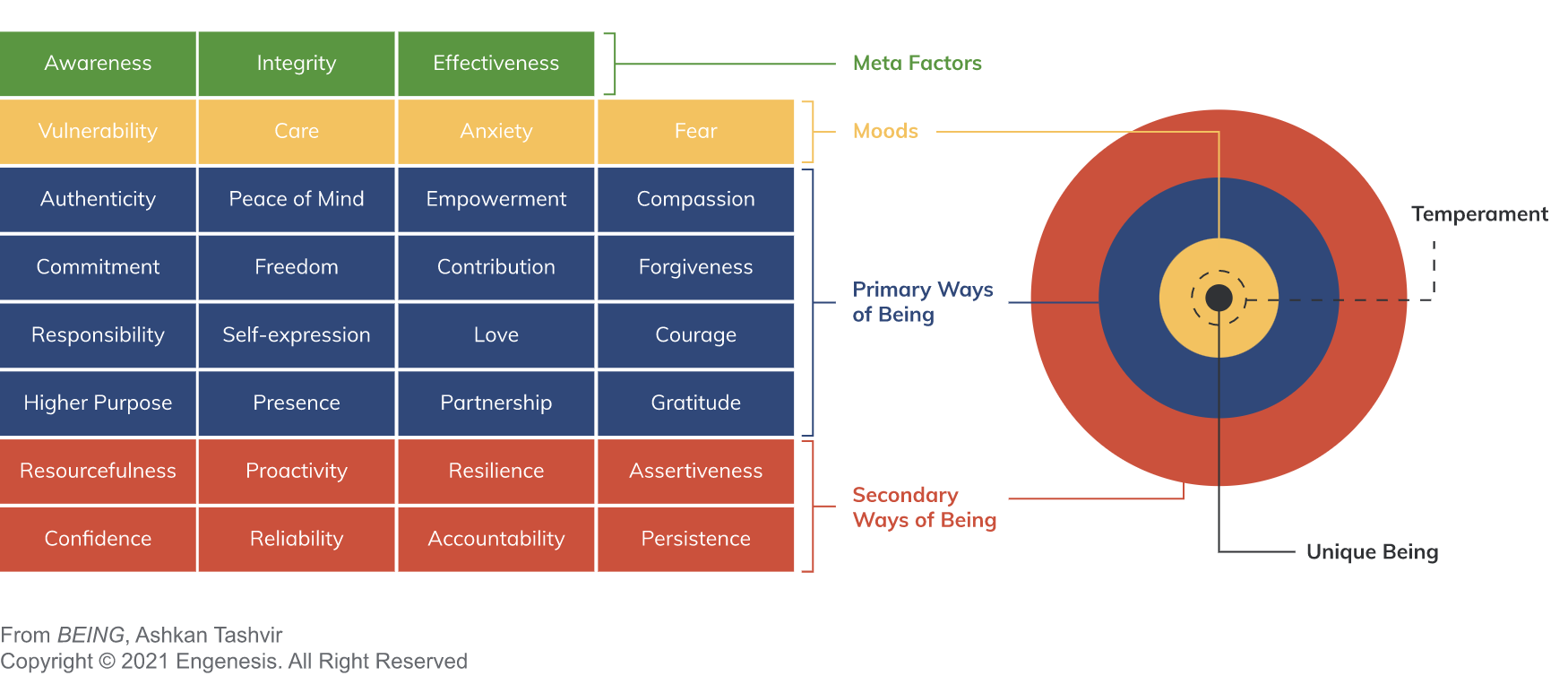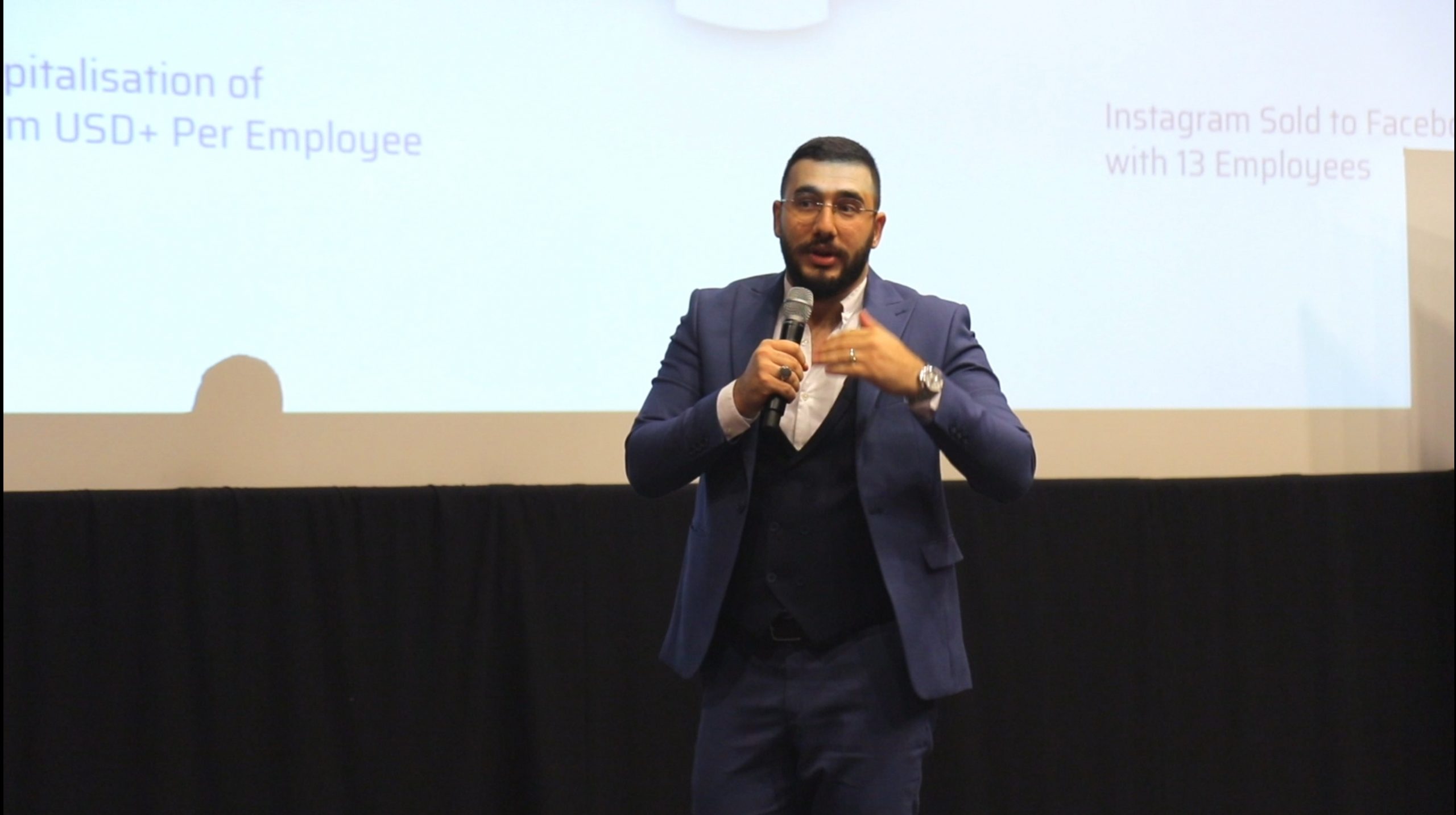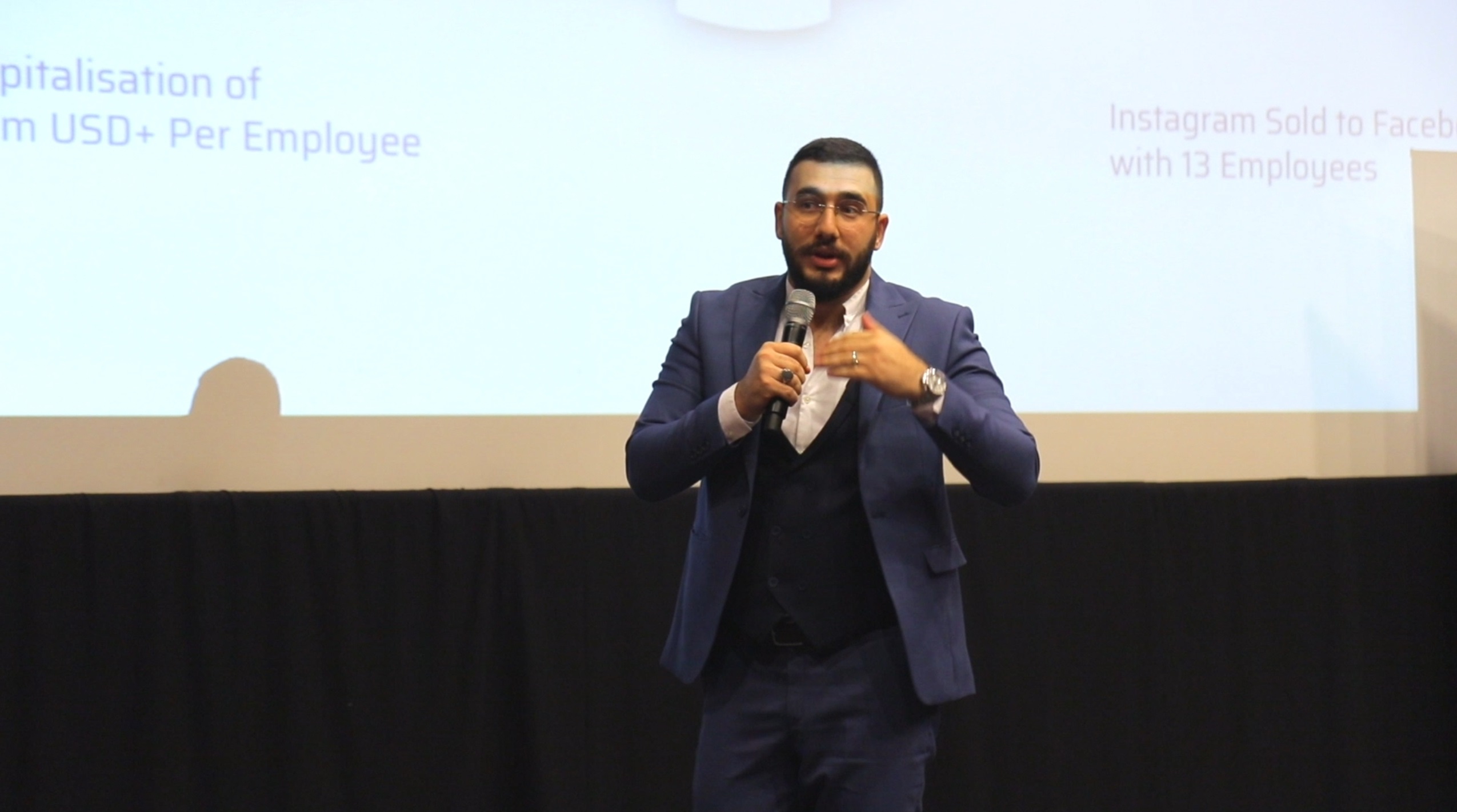Ashkan Tashvir’s new book, Human Being, brings a fresh approach to understanding people
Ashkan Tashvir’s second book, HUMAN BEING – illuminating the reality beneath the facade, has surged to become an Amazon Australia best-seller in the categories of Business Leadership, Applied Psychology and Popular Applied Psychology within days of its global launch. This has placed Tashvir’s name alongside renowned authors like Brené Brown and Stephen R. Covey. The book, which follows Tashvir’s critically-acclaimed body of work, BEING, was launched to an online audience of more than 120 from all corners of the world on Thursday, July 28 2022. The launch included an expose of the book presented by the author and short talks delivered by several practitioners of the Being FrameworkTM – a series of principles, practices, methodologies and tools for understanding human beings in the scope of performance, effectiveness and leadership. The practitioners who spoke at the launch included business leaders who have adopted the framework throughout their organisations.
Meet the Author, Ashkan Tashvir
Describing himself as a technologist, parallel entrepreneur, investor and philosopher, Tashvir is, in his own words, “extremely obsessed with human beings and humanity”, adding that being a philosopher is particularly significant for him at this stage of his life. He can now also add two-times best-selling author to his list of credentials.
As a parallel entrepreneur, commonly known as a venture builder, Tashvir regards entrepreneurship as “a vehicle that is uniquely positioned to make a huge difference in solving human beings’ problems”. This view led him to add a major subsidiary to the Engenesis ecosystemin 2017 – Engenesis Ventures – with Ariya Chittasy, who holds the role of director. Reflecting back, Tashvir said,
“It was never supposed to be an incubator or conventional venture capital, hedge fund or anything like that. We wanted to be quite hands-on in working with a number of businesses, sharing resources, time, experience, knowledge and our people. The question was how to find the right teams to invest our capital, time and other resources into.”
This question led Tashvir and his team on a quest to find the right people to partner with.
“We reached out to many self-proclaimed entrepreneurs in over thirty countries in the world,” said Tashvir. “
In just over a year, we engaged with more than 1800 startups and entrepreneurs. Our hope was that we would find the ‘right ones’, the so-called ‘perfect human beings’ to partner with so we could build super successful businesses with them.” However, their rate of selection was extremely low. Speaking with more seasoned venture capitalists made Tashvir realise that his experience was far from isolated. While he and his team could tick off technology, access to capital and experience and knowledge around how to run a successful venture, Tashvir realised that it wasn’t enough. The missing link was people.
The factor that many great entrepreneurs have in common
High-calibre entrepreneurs like Steve Jobs, Richard Branson, Elon Musk, Bill Gates and many more have all attributed much of their success to the ‘great’ team of people around them. But how do you define this ‘greatness’? What do words like ‘great’, ‘talented’ and ‘amazing’ really mean when it comes to describing human beings, particularly in relation to performance and effectiveness? Realising that the answer to this question had never been explored in a methodical, rigorous and practically applicable way, Tashvir and his team embarked on a journey to discover how human beings tick at a deeper level.
They began by looking into various approaches, disciplines and assessment tools and found that while they were not without merit, they essentially treated human beings as though we are hardwired to be as we are now, meaning we need to learn ways to deal with those so-called ‘fixed personality types’ or ‘unchangeable traits’. There was also little information, including within academia, on human transformation.
“Traditional approaches mainly focus on behaviours – what is visible on the surface. Naturally, thoughts, feelings and behaviours are important. But they don’t tell us everything. We human beings can be really good at pretence; we can be masterful actors. Therefore, behaviours on the surface don’t reveal the totality of a human being,” said Tashvir.
Referring back to the question of how to find ‘great’ people, Tashvir realised there are deeper qualities that matter. Looking into these qualities from an ontological perspective, Tashvir went on to develop the world’s first ontological framework for how humans are BEING in the world. He called it the Being FrameworkTM, a multilayered paradigm that sits alongside a comprehensive methodology and tools that support us in developing a more congruent and authentic conception of the reality of human beings in the scope of performance, wellbeing, integrity, effectiveness, leadership and fulfilment.
“By ‘being’, I am not just referring to existence, or to us being ‘out there in the world’. I’m referring to nature, quiddity, whatness – the qualities that human beings possess and how we are being: how we relate to each of those qualities,” said Tashvir.
A structured and rigorous approach to Being and transformation
In the Being Framework’s ontological model layer, Tashvir has identified thirty-one qualities, which he calls ‘Aspects of Being’. These are divided into four layers:
- Meta Factors (the highest-level qualities of Being): Awareness, Integrity, Effectiveness
- Moods (the drivers that set the scene): Vulnerability, Care, Fear, Anxiety
- Primary Ways of Being (deep, underlying primal qualities that influence our decisions, behaviours and actions): Authenticity, Responsibility, Freedom, Courage, Commitment, Gratitude, Higher Purpose, Empowerment, Presence, Peace of Mind, Compassion, Love, Contribution, Partnership, Forgiveness, Self-expression
- Secondary Ways of Being (the bridge between our primal qualities and our behaviours and actions on the surface): Assertiveness, Proactivity, Confidence, Persistence, Resourcefulness, Resilience, Accountability, Reliability

Figure 1 – The Being Framework includes an Ontological Model that brings a structured and rigorous approach to human transformation to cause performance, leadership and effectiveness.
How the Being Framework works
By casting light on our underlying qualities, the framework enables us to demystify human beings – ourselves and others – and, in so doing, unravel the reality behind our decisions, behaviours and actions. Importantly, the framework does not categorise people like other methods do. Based on the premise that human beings can and do transform, the framework provides the tools that enable anyone to polish and transform their relationship with each of its thirty-one qualities and track their growth over time. Furthermore, by breaking down commonly misunderstood and vague concepts like integrity (being whole, complete and undivided) into smaller, readily digestible chunks, the Being Framework not only “makes the invisible visible” – as one Being practitioner described it – but it also offers a practical and consistent means to articulate the qualities all human beings possess but relate to differently. Today many leadership, performance and executive coaches from around the world are trained Being Framework practitioners, and this number is rapidly growing as word of the framework’s tangible benefits spreads.
HUMAN BEING introduces readers to the Being Framework and its associated tools, the Being Profile® and Transformation MethodologyTM. It equips readers with a lens to read themselves better: to bring clarity and precision to what drives our behaviours, decisions and results. Readers can also ‘flip the lens’ and use it on others, enabling them to make more effective decisions when working in teams and partnerships or developing personal relationships.
Ariya Chittasy said, “This is the manual to understanding why people do what they do. It’s the manual you wish you had before you made your personnel hiring mistakes and before you put too much trust in the wrong person. It’s what you wish you knew before you grew your organisation to a point where the culture led to the team eating itself alive.”
Creating a world in which everyone is a better version of themselves, one human being at a time
HUMAN BEING casts light on our collective lack of misunderstanding and misconceptions of human beings and how this leads to making ineffective, expensive and damaging decisions in our lives, the source of great pain and suffering, individually and collectively. It paints a vivid picture of how you are and how others are being, with the ultimate goal of creating a world in which everyone is a better version of themselves.
For readers personally, the book supports them to make more effective decisions, know when to say their real yeses and noes, fulfil their intentions and be true to their authentic selves for a life of influence, meaning fulfilment and wellbeing.
Tashvir said, “This framework is not about judging people. It’s also not a quick fix recipe for success and it’s not about affirmation, positive thinking or rapid behavioural change. It’s a sustainable and effective methodology that causes transformation over time.Its role is to assess people and support them to look into the areas that matter. We all have matters we care about. And it is a phenomenological fact that when we care about something, we want to fulfil our intentions in that matter. In order for us to fulfil our intentions, we need to be effective. And in order for us to be effective, we need to be of integrity, to have all cogs in the machine (Aspects of Being) working at an optimal level. Put simply, HUMAN BEING will support you to see how to BE so you can DO what it takes to HAVE what you care most about in life.”
HUMAN BEING – illuminating the reality beneath the facade is available to purchase in hard copy or eBook formats via Amazon.

